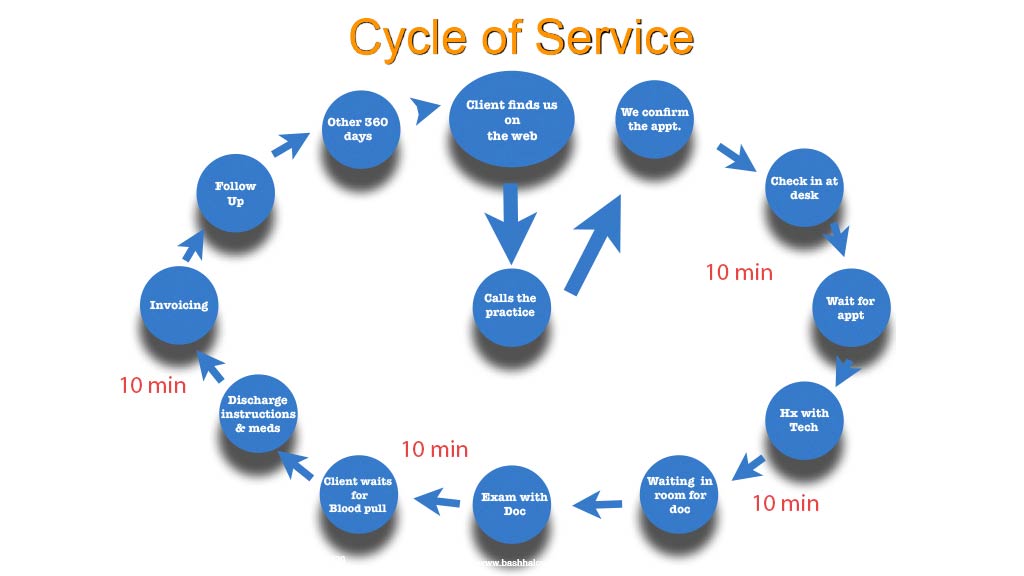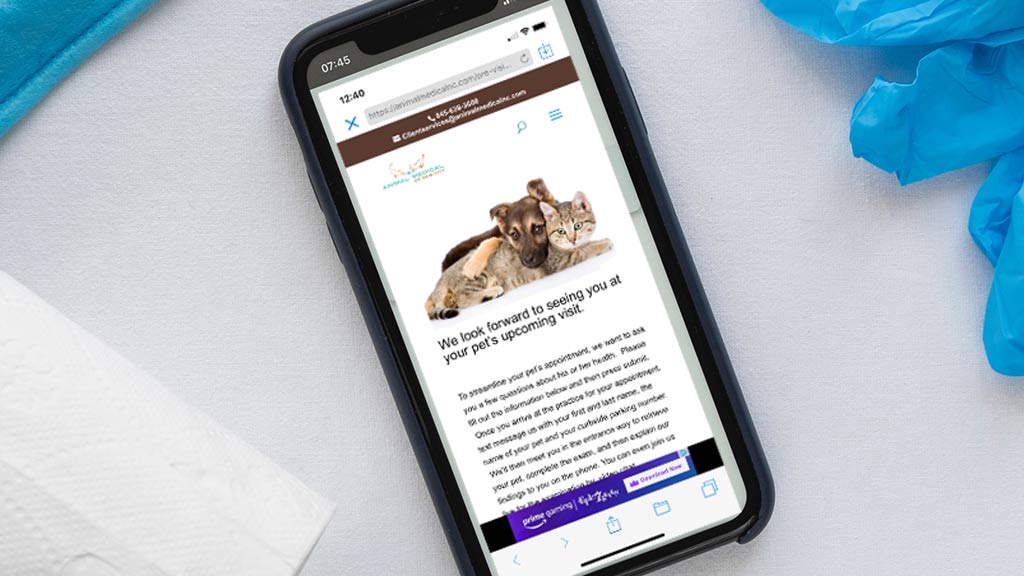Ask team members to better define what they mean when they say they are burned out. With more specifics on what everyone is feeling, you’ll come up with more effective solutions.
Collect Accurate Information
Remember that time you raised prices and then three, very loud clients complained? Afterwards, members of your team burst through your office door and told you that all of your clients were furious with the price hikes and ready to walk.
Be careful of painting your staff’s sentiments in the same broad strokes. A few prominent members of our team complain about burnout and we jump to the conclusion that everyone else feels the same way. That’s almost never true. The real answer is usually much more mundane: that you have a range of employees with a mixture of thoughts and feelings, so there’s no need for such defeatist talk. If you commit yourself to objective, one-on-one listening with individuals, you will emerge with ideas about what you can do to make things better.
6 Ways To Get Your Team To Open Up
Be Specific with Your Questions
General questions like, ‘So, how are things going?’ are never as good as those that tie into a specific action or reaction of one of your team members. Swap out, ‘How are you doing?’ for ‘I saw you counting inventory today. You looked peeved. Did I read that right?’ Or substitute, ‘What’s going on these days?’ for ‘You are so good with clients. Is there more I can do to encourage other employees to have as much fun as you do when providing service?’
Be Thoughtful about the Answers
After years of listening to employees (and leaders) monologue, I’m convinced that people need to hear themselves talk before they figure out what they think. There is some research to back this claim. Using a series of surveys, organizational psychologist, Tasha Eurich, found that only 15% of Americans are self-aware. That means that for every 100 employees you talk to, you’re going to have to listen to 85 trying to determine if they know what they’re saying. It’s a lot of ‘you knows’, ‘I don’t knows’ and, ‘You know what I’m talking abouts’ to sit through. In the interest of time, you may be better off asking harder questions in small group settings, allowing team members to speak up as needed, and then following up with the same questions one-on-one after everyone has had time to think about what you asked and how others answered. it may also give you more insight into how to redraft your questions.
Conduct an Anonymous Poll
As of this writing, you can still build anonymous surveys using Survey Monkey. You’re limited to ten questions and some of the more advanced features of the program are restricted, but it’s still worth it. Inside the program, you can craft questions, email or text respondents, and analyze results. I have found that anonymous surveys are a great way to tap into the thoughts of bottled-up groups.
Ask A Non-biased Third Party
Sometimes leaders are so done in by chronic employee dissatisfaction that they no longer have the capacity to be empathetic, understanding, or objective. In such cases, it may be helpful to have an outside person come to your practice, listen to everyone’s position, and fairly weigh in on the matter.

An In-person Lunch and Learn For Your Team?
It can probably be fully funded! Find out how you can bring a fresh perspective and a lot of inspiration to your next team meeting! Click for more info.
See Through Your Open Door Policy
Open door policies usually open into the offices of leaders, territory that can be intimidating to many employees. Rather than waiting for problems or solutions to walk through the door, get out of your office and seek them out on your own. Look for brief one-on-one opportunities with employees. Ask them about matters at hand as a springboard for more meaningful dialogue about what may be going on underneath.
Don’t Listen, Look for Clues
Employees usually look ticked off, long before they say they are ticked off. That’s normal for many individuals. They may be ashamed of their feelings, feel that speaking up makes them look like a ‘bitch’, worried that they will be fired if they say they are unhappy, etc. Be on the lookout for signs that employees have something to say and then craft questions to draw them into a safe conversation about what they are feeling and thinking.
Reduce Roadblocks To Job Satisfaction:
Zero in on What Employees Find Most Stimulating
I play a game with veterinary teams called A Great Day At Work where employees are asked to recall the last time they experienced real fun and fulfillment at their jobs. I think it’s instructional because it identifies what team members find most enjoyable and motivational about work. Though I’ve done this exercise with teams all over America, the answers always fall into three categories:
- Teamwork: “I don’t know, we were busy as all get-out, but we laughed, worked hard, and got through it together.”
- Praise: “A client told me that I was the most compassionate human she has ever met.”
- Self-actualization: “I finally placed a jugular catheter!”
When managing, try to focus on creating more great days at work by staying alert to small, individual triumphs and pointing team members in directions where they are more likely to succeed. As far as team work goes, hire for the army, not the arms; pay attention to how your people work as well as how your people work together.
The latter is worth underlying. People are magnetized by a sense of togetherness. The most productive, engaging work; the businesses that are most magnetic; the services that have the most zing are all products of teams that enjoy working together. Assembling that kind of a crew is no easy matter. Worse, after 20 years of trying, I’m not convinced I understand the secret in the sauce, but here is my sense:
- Great teams come together under one over-arching, inspirational purpose.
- Leaders keep the group’s most uplifting achievements alive in everyone’s mind.
- Individuals see their efforts as uniquely relevant to the group’s success.
$1000
$1000.00 referral fee for veterinarian applicants. Sign on bonuses also available. More.
Organize and Improve Efficiency
Most hospitals focus training, reviews, and coaching on individuals, though every patient care and customer service transaction is predicated on how we work together. To improve, train, and problem solve as a group. Use these tips:
Leverage Technology
The Pandemic pushed practices to try technology they would have otherwise dismissed as too much of a bother or too complicated to onboard. It was a boon. Hospitals, struggling with staff shortages, learned that they could free up valuable team member time by leaning on automation, two-way texting, apps, and smart phone systems. Regardless of your client’s age demographic or your own comfort with technology, all veterinary leaders should educate themselves about the software that’s available to help veterinary practice teams save time.
Challenge Workflow
Most practices move clients through the service experience according the diagram shown above. Though it is an adequate way of serving clients and patients, many veterinary teams have found ways to improve to save time and better the client-patient experience.
Meet Better
Instead of sitting around and talking through problems, get everyone up, on location, and working through the issue. If you are trying to resolve a question regarding exam room service, put your lunch-and-learn pizza down, stand up, go into the exam room, and act out the proposed issues in real time. If the service question involves a pet, bring a toy pet from home and incorporate the prop into the exercise. It may seem silly, but this kind of action-centered problem solving stimulates thought and improves retention. It’s a proven way to increase creativity and team engagement.
Celebrate Autonomy/ Give Authority
Usually practice leaders react to service or care mistakes by creating rules. When I visit mature hospitals, I sometimes find that they have reams of rules; that they have so many rules, staff members don’t know why some of them exist at all.
Protocols, redundancy, and rules are great for medical facilities to lower the risk of medical errors, but nothing trumps team members hired and trained for alertness and an eagerness to problem solve. As issues arise at your practice, consider changing protocols in response, but also help team members understand that they have the power to identify potential issues on their own and respond to them with authority and autonomy.
It’s not for the faint of heart. Handing over the reins of agency to individuals with less experience is a guaranteed recipe for error. It’s also an unarguable path to engagement, growth, and company strength. Great leaders…okay, better leaders are ones that can hand over power and find a way to sleep at night at the same time. They are ones that don’t lose their cool at employee mistakes, rather they give out power wisely and hang out with employees while they try to get it right.
I have been to practices with rigid rules; I’ve been to practices where decision making is more ad hoc and occurs on a case-by-case basis by experienced employees. The former has fewer mistakes; the latter has a more loyal, engaged team and is a more fun place to work. Weigh the appeal of both and try to determine if your hospital can have more middle ground.
- Professional one-on-one assistance customizing your wellness plan
- Local market analysis of your pricing (a 10K value!)
- Customized marketing help
- Integrates with your PMS
- Best of all, you don’t need to bill! You collect when services are rendered!
Don’t Be A Victim
Too much work? Stop taking appointments. Angry clients? Get rid of them. Neither of these ideas would be my first pick, but they are in your arsenal and you have to power to use them if you need to. So why not try a softer approach the first or even a second time? Isn’t the value of growth worth the risk of failure?
Plotted on a graph, veterinary professionals are some of the smartest this world has got on offer. They also usually work in the company of like-minded, supportive individuals. Brains, support…to have a self image as a victim of clients, caseload, or the profession is an undersell.
Take a risk; make an exerted effort to improve your workplace satisfaction and the client/patient experience, a proposal that is in no way mutually exclusive.











